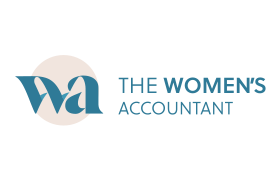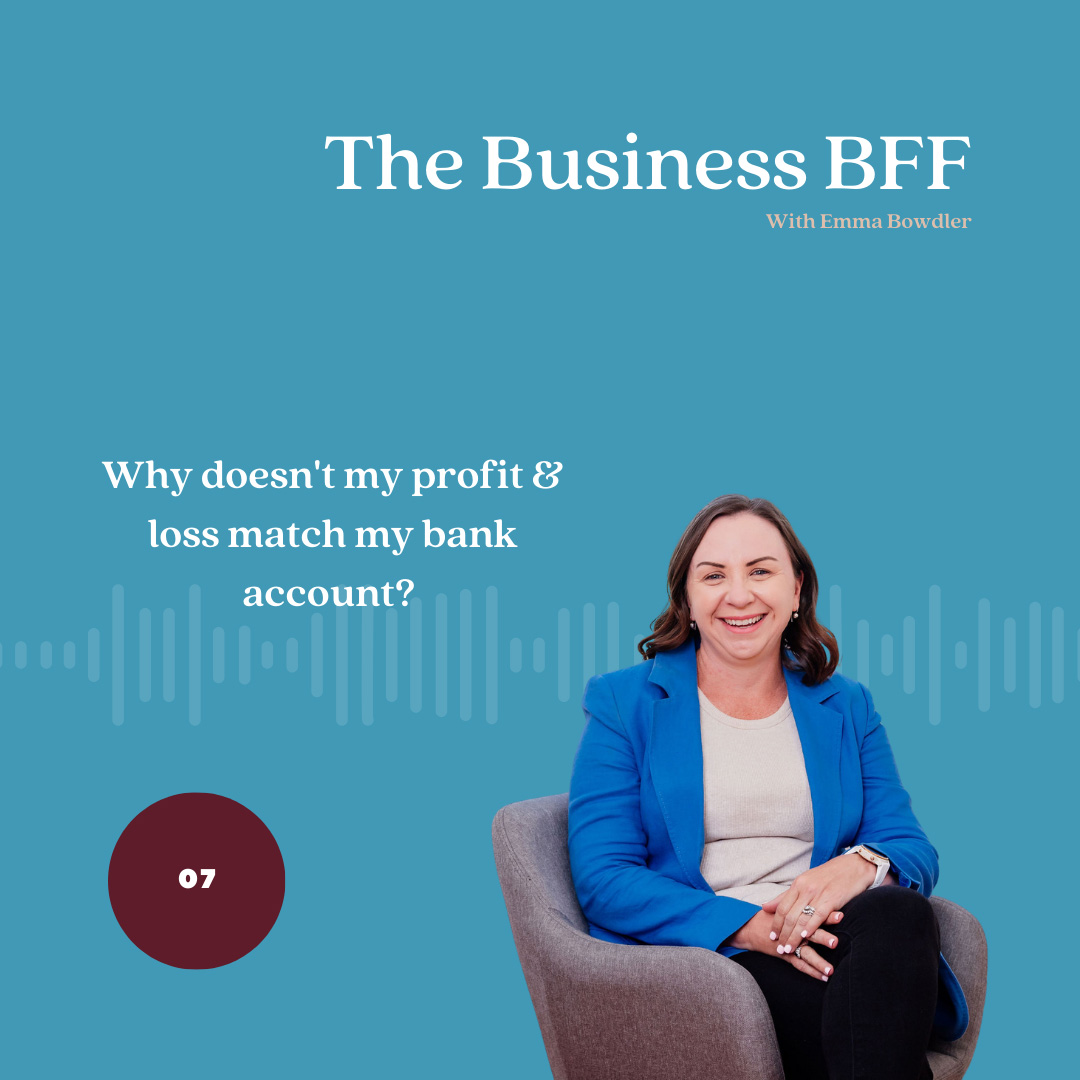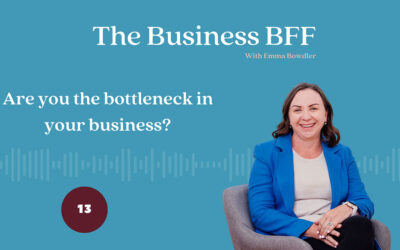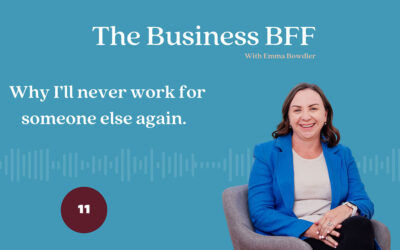The Business BFF Podcast – Episode 7:
Why Doesn’t My Profit & Loss Match My Bank Account? Here’s What You Need to Know
28 March 2025
Ever looked at your Profit & Loss statement and thought, “Wait… where’s all my money?” You’re not alone! In this episode, Emma breaks down exactly why your P&L and bank balance don’t always see eye to eye.
From GST and loan repayments to asset purchases and drawings, Emma explains the hidden cash flow killers that don’t show up on your P&L—but definitely hit your bank account. And don’t worry—she keeps it jargon-free and actually makes it make sense.



Episode 7: Why Doesn’t My Profit & Loss Match My Bank Account? Here’s What You Need to Know
temp
Episode Transcript:
[00:00:00] Emma: Let me ask you something. Have you ever looked at your profit and loss statement and thought, hang on, why doesn’t this match my bank account? You are not alone. And today we are going to unpack exactly why this happens. We’ll chat about things like GST, loan repayments, and those shiny new assets you buy that seem to zap your cash, but don’t show up on your profit and loss the way you expect. But don’t worry, I’ll explain this to you in a way that actually makes sense. So if you’ve ever felt like your P& L is lying to you, stick around and I’ll explain to you why.
[00:00:45] Welcome to the Business BFF, the podcast where fierce and fabulous business women come together for the kind of real talk and honest advice only your besties would give. I’m your host, Emma Bowdler, founder of The Women’s Accountant, [00:01:00] and I’m here to help you navigate the wild world of business, finance, and life, whether you’re scaling up Starting fresh or just need a pep talk from someone who gets it, you’re in the right place.
[00:01:12] So grab your favourite bevy and get comfy. It’s time for a chat with your business BFFs.
[00:01:19] Emma: So let’s talk all things profit and loss. So if you have pulled your P& L from whatever accounting software you use, and I hope it zeroed, You probably look at it and go, why is it not matching my bank account?
[00:01:35] And it is a super common question that we get asked here. And often it occurs at tax planning time, when we are, basically bringing people’s books up to date and doing some forecasts around where they might end up on a tax scale. I guess, what their taxable income might be for the end of the year.
[00:01:54] And often I’ll hear people say, I’ll, I’ll be super excited and go, [00:02:00] congratulations, you are forecast to earn a hundred thousand dollars this year. And the tax will be 25, 000. And you might look at me and go, well, holy shit. I’m like, how is that possible? When I don’t have a hundred thousand dollars in the bank.
[00:02:14] And there’s some really common ways and reasons that that happens. And the first one is that your profit and loss is probably produced on an accruals basis. So I can hear you saying to me, Em, what the hell is an accruals basis? So what it is, is that when you pull your profit and loss, it is most likely prepared on an accrual basis.
[00:02:40] And so what that means is that the income and the expenses are recorded when they’re invoiced. or incurred, but not when the money is actually paid or paid from the bank account. So, if I think of an example of that, let’s say [00:03:00] that, you send your business a 5, 000 invoice. If you were to pull your profit and loss, it would actually include that 5, 000 as income, even though I’ve not, I’ve not paid it to you yet.
[00:03:16] So if you’ve invoiced clients, but haven’t get, haven’t yet been paid, that income will show on your profit and loss. Even if it’s not in the bank account. And in the same way, if we think about your expenses, if you’ve received a bill, but you haven’t yet paid it, the expense will appear on your profit and loss, even though the balance of your bank account hasn’t changed.
[00:03:42] So that’s the first reason. The second reason is that your profit and loss. Excludes GST and tax payments. So if you are registered for GST Then when you pull your profit and loss it is going to show on a net basis [00:04:00] So things like your PA, your GST is not going to be included in there Your income tax is actually not considered even an expense.
[00:04:10] It’s considered a liability so that one’s not going to show in there and And they can, I guess, impact or I guess reduce your bank account balance, even though it hasn’t affected your profit and loss. So an example might be let’s say that you’re a mortgage broker and you earned 11, 000 in commission for the month.
[00:04:35] And of that 11, 000, A thousand of it might be GST. So, you’re not going to get an expense on the profit and loss for the thousand dollars, because that relates to the tax component, the GST component. So even when that leaves the bank account, that’s not going to reflect on your profit and loss.
[00:04:55] So a little bit to get your head around there. So just see how that [00:05:00] digests for you. The third reason that your profit and loss is different to your bank account is that your profit and loss excludes loan repayments. So what do you mean by that M? So loan repayments consist of two parts. Most of the time, one of them is principal and one of them is interest.
[00:05:22] So the interest component. Is the tax deductible part. And that is the part that will be recorded on your profit and loss. The principal component isn’t recorded on the profit and loss. And that actually affects the liability, which sits on the balance sheet side of things. So. It matters because it can make your profit and loss look better than it actually is.
[00:05:50] From, your cash situation. So if you are a business who has got, you might run things really leanly and you might be having a look at your P and L and there’s a really [00:06:00] healthy profit there. But if you were debt heavy and you’re paying a lot of money out in loan repayments. The loan repayments come out of the profit.
[00:06:08] So, it’s going to affect the cashflow situation, which makes things a little bit tricky. So if you have a think about, let’s say you are a personal trainer and you’ve got loan repayments on equipment that is a thousand dollars a month. So, that thousand dollars isn’t going to show on the on the profit and loss at all.
[00:06:32] It will only show on the balance sheet. Another super common I guess not problem, but a reason for that is if you are a sole trader, a sole trader can’t be an employee of your own business. So you take your, I guess, Earnings as what we call a drawing. So what that means is you’re not getting a tax deduction for the drawing and it’s [00:07:00] not reflected on your balance on your profit and loss.
[00:07:02] So if you have got a 50, 000 profit, and this is something I see really. are regularly with business owners is that, if you’re showing a 50, 000 profit and you’re, you’re taking drawings out, you’re still going to be taxed on the 50, 000 if you’re a sole trader. So drawings and dividends, if you were a shareholder of a company, don’t actually affect the profit loss.
[00:07:27] It’s a withdrawal of the equity and those items are shown on the balance sheet. So if you are the kind of person who is living out of your business bank account and taking those funds as a drawing or as a loan to directors or whatever that looks like, I would really strongly encourage you to have a look at that.
[00:07:50] And, I guess create a bit of a budget to know what you’re drawing from the business because regular drawings can create a cashflow strain on your [00:08:00] business. Even though the profit and loss looks healthy. So just keep that in mind. The next thing that we are that the next thing I guess that I guess is one of the reasons why your profit and loss doesn’t match your bank account is that your profit and loss excludes asset purchases.
[00:08:21] Okay. So if you are buying equipment or vehicles or other assets, They’re not actually recorded as an expense on your profit and loss. It’s recorded as an investment or an asset over on your balance sheet. So the only time that, you will, I guess, realize an expense for a asset is through depreciation.
[00:08:48] And often your accountant will run that for you at the end of the year. So this matters because an asset purchase Will reduce your bank account balance [00:09:00] immediately, but it won’t have an impact on your profit loss until the end of financial year when we buy, when your accountant claims depreciation. So if you think of an example of, let’s say you’re a photographer and you buy a new camera and say it’s a full camera set up worth 10, 000.
[00:09:22] And you pay cash for that. So the cash leaves the bank account of 10, 000, but you might only get a portion of the tax deduction on the profit and losses depreciation. And I don’t know off the top of my head what cameras are depreciated at, but let’s say they’re 20%. If you’ve spent, 10 grand, you’re only going to realize a, I guess, tax expense or a tax benefit of two.
[00:09:47] And that’s what you will show on your profit and loss. So I understand that’s a lot to digest and there’s a lot of there to get through, but I hope that this chat [00:10:00] has given you some clarity on why your profit and loss might not always tell the whole story. It’s not about trying to freak you out.
[00:10:09] It’s about helping you try to understand what’s going on so you can make better decisions moving forward. So today’s takeaway is to have a look at your profit and loss and have a look at your bank account. Are there things like GST and loan repayments and drawings missing from the picture? And just see if you can piece those together and that’s where I guess a lot of the confusion Might be able to be alleviated for you.
[00:10:41] Thanks for tuning in to The Business BFF. We hope you found this episode equal parts big hug and kick up the bum. All the things a bestie is good for. Remember you’ve got this and we’ve got your back like only a BFF can. If you’ve loved what you’ve [00:11:00] heard be sure to subscribe, leave a review and share it with your fellow business besties.
[00:11:06] Don’t forget to follow us on social media at The Women’s Accountant. For more tips, tricks, and behind the scenes fun, until next time, keep being fierce and oh so fabulous.
[00:11:18] If this episode made you go, yes, M, I get it now, then I would love to hear from you. Shoot me a DM over on Instagram at the Women’s Accountant or share it with someone who needs a little nudge to get their head around this too.
[00:11:35] Mhm. Mhm.
Latest Episodes:
Episode 13: Overcoming the Bottleneck – Empowering Your Business to Thrive
In this episode, I’m talking about one of the hardest truths in business—you might be the bottleneck. We’ll unpack what that actually means, how to spot the signs, why it happens (hello, control issues), and what you can do to get out of your own damn way.
Episode 12: Tax Time 101 – What You Need To Lodge & When
In this episode, I’m breaking down all the key lodgements you need to know about, from income tax returns and BAS to IAS, super contributions, and even the extra bits like FBT and STP.
Episode 11: Why I’ll Never Work for Someone Else Again
The Business BFF Podcast - Episode 11: Why I’ll Never Work for Someone Else Again23 May 2025In this episode, I’m sharing the story that changed everything—back in 2009, I was a single mum juggling work, life, and two little girls when I was forced to choose between my...
📧 Join Our Mailing List
Never Miss
an Episode:
Join Us!
Subscribe to our mailing list to receive the latest updates from The Women’s Accountant straight to your inbox:




